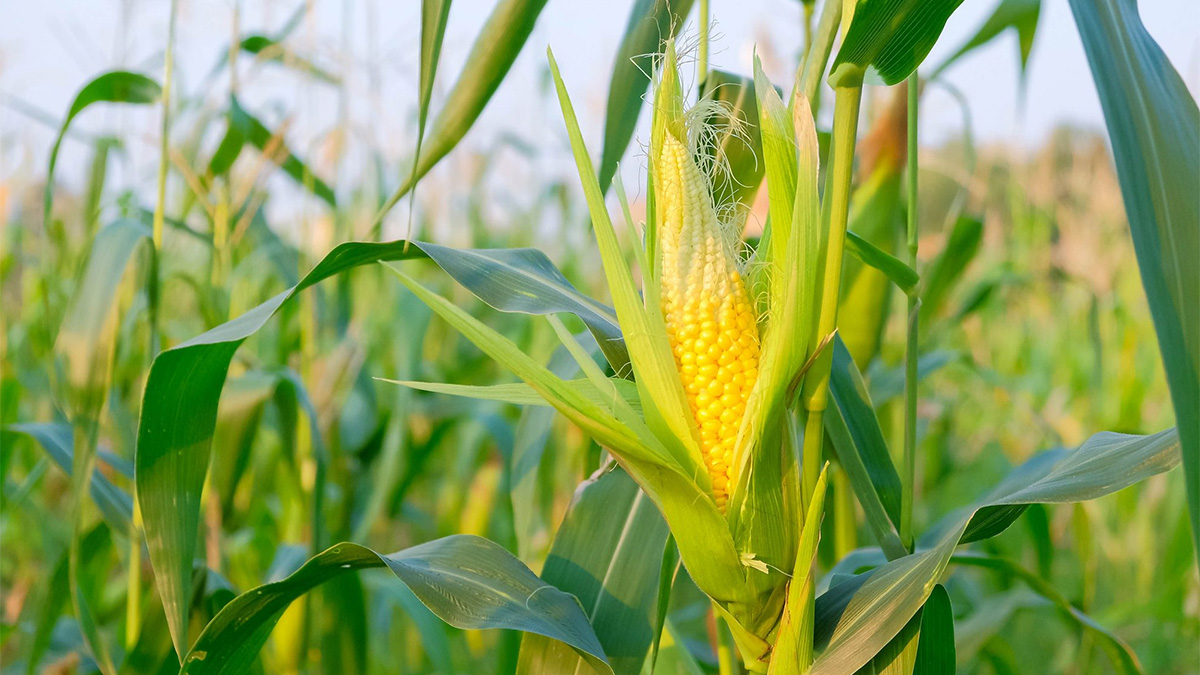Sweet Corn Growing Advice Straight from the Farm

Growing sweet corn at home can be incredibly rewarding, especially when you apply the tips used by real farmers. From choosing the right variety to knowing exactly when to harvest, this guide brings practical, field-tested advice straight to your backyard. Whether you’re new to gardening or looking to improve your results, you’ll find everything you need to grow sweet, flavorful corn like a pro.
Related: How to Grow Dazzling Rainbow Corn That’s Too Pretty to Eat
Why grow sweet corn at home?
There’s nothing quite like the flavor of freshly picked sweet corn. When you grow it yourself, you enjoy superior taste, better texture, and full control over how it’s grown. It’s also a fun and rewarding way to reconnect with traditional seasonal gardening.
Sweet corn picked at peak ripeness contains more natural sugars than anything you’ll find at the store. Homegrown varieties also let you skip synthetic chemicals if you’re aiming for organic gardening. Plus, growing corn is a great way to get kids involved in the garden.
Choosing the right variety
Sweet corn comes in three main types: standard sugary (SU), sugary enhanced (SE), and supersweet (SH2). SU types are old-fashioned and best eaten quickly after harvest, while SE offers more sweetness and better storage. SH2 varieties are very sweet and stay that way longer but can be more finicky to grow.
In warmer climates, SE and SH2 types perform well. In cooler northern areas, SU and early-maturing SE varieties may be more reliable. Ask your local extension office or farm supplier for recommendations suited to your region.
Site selection and soil preparation
Corn loves full sun, so choose a spot that gets at least 6 to 8 hours of sunlight per day. It also needs fertile, well-drained soil that can hold moisture without becoming waterlogged. A slightly acidic to neutral pH around 6.0 to 6.8 is ideal.
Farmers often prep their fields in fall or early spring by tilling in compost or manure. You can do the same on a smaller scale by working aged compost into your garden beds. Performing a soil test can help identify any nutrient deficiencies before planting.
Planting corn the right way
Corn is best planted in spring after soil temperatures reach at least 60°F. Cold soil can cause poor germination, so don’t rush it. Warmer climates can get an earlier start, while northern gardeners may need to wait until late April or May.
Plant corn seeds about 1 to 1.5 inches deep and 8 to 12 inches apart in rows. Leave about 30 to 36 inches between rows for air circulation and easy access. Rather than one long row, plant in short blocks of three or more rows to promote even pollination.
To enjoy fresh corn longer, stagger your planting every one to two weeks for successive harvests. This works best with the same variety so pollination remains consistent. Avoid planting different types side by side, as cross-pollination can affect taste and quality.
Watering and fertilizing like a farmer
Corn needs consistent moisture, especially when silks form and ears begin to fill. Aim for about 1 inch of water per week, either from rain or irrigation. Water deeply at the base of the plant rather than overhead to reduce the risk of disease.
Fertilize before planting by working in a balanced, slow-release fertilizer or compost. Once the corn is knee-high, apply a side-dressing of nitrogen, such as blood meal or fish emulsion. Farmers often use a second feed right before tasseling to support ear development.
Avoid over-fertilizing, which can lead to lush stalks but small ears. A soil test can help fine-tune your nutrient application and avoid wasting resources. Mulching around the base of the plants also helps retain moisture and reduce weed pressure.
Controlling weeds, pests, and disease
Weeds compete with corn for nutrients and water, especially in the early growth stages. Farmers often use mechanical cultivation early in the season, while home gardeners can rely on hoeing and mulch. Keep weeds under control for the first four to six weeks.
Raccoons and corn earworms are the top pests. Use fencing or electric wire to keep raccoons out, especially near harvest time. For earworms, try applying a drop of mineral oil or neem oil to the silks after pollination to deter them.
Cutworms and aphids can also show up but are usually manageable with handpicking or insecticidal soap. Common diseases like rust or smut are more likely in wet, crowded conditions. Rotate your corn crop each year to avoid a buildup of pathogens in the soil.
When and how to harvest sweet corn
Corn is ready to harvest about 18 to 24 days after the silks appear. Look for brown, dry silks and full, firm ears. To test, peel back a bit of the husk and press a kernel with your fingernail. If a milky liquid comes out, it’s ready.
Harvest in the morning for the highest sugar content and best flavor. Gently twist and pull the ear downward to snap it off the stalk. Try to cook or refrigerate it as soon as possible, since sweetness begins to fade after picking.
If you’re growing multiple varieties, keep them separated by space or timing to preserve their unique flavors. Proper handling right after harvest preserves the freshness that makes homegrown corn so appealing.
Common mistakes first-time growers make
One common mistake is planting corn too early, when the soil is still cold. This leads to poor germination and slow growth. Waiting for warm soil ensures a stronger, healthier crop.
Another issue is overcrowding or poor spacing, which restricts airflow and reduces pollination. Planting in short blocks rather than long rows helps produce fuller ears. Also, forgetting to fertilize during key growth stages can lead to disappointing yields.
Pest and weed control is often underestimated. Early intervention makes a big difference. Ignoring these threats can undo weeks of good planting and care.
Pro tips from the field
Farmers often soak seeds overnight before planting to speed up germination. While not essential, this trick can help in cooler climates or with older seeds. Companion planting with pole beans or squash can also deter pests and maximize space.
To conserve water, consider planting corn in slight basins or furrows that catch rain and irrigation. In very hot regions, afternoon shade from taller companion crops may help reduce heat stress. Keep an eye on weather forecasts and water more frequently during dry spells.
If you want to save seed, grow only one open-pollinated variety and allow the best ears to fully mature and dry on the stalk. Avoid hybrids if your goal is to save seeds, since they may not breed true.
Frequently asked questions
Can sweet corn be grown in containers?
Yes, but you’ll need a large, deep container and a dwarf or early-maturing variety. Use rich potting mix and water frequently. Pollination may be less reliable, so consider hand-pollinating by brushing the tassels and silks together.
How long does sweet corn take to grow?
Most sweet corn varieties take between 60 and 90 days from planting to harvest. Early varieties mature faster, while supersweet types can take a bit longer. Check seed packets for exact timing.
Can I plant different corn varieties together?
It’s best to avoid planting different types close together, especially if they tassel at the same time. Cross-pollination can affect sweetness and texture. Separate different varieties by distance or planting time to prevent mixing.
How many ears of corn per plant?
Most healthy corn plants produce one to two ears. Some varieties may yield three if conditions are ideal, but two is the norm for sweet corn. Proper spacing, feeding, and watering all contribute to better yields.
Conclusion
With the right variety, spacing, and care, sweet corn can thrive in your home garden just like it does on the farm. By following proven farming techniques, you’ll enjoy bigger harvests, better flavor, and fewer growing issues. Put these tips into action and experience the difference firsthand with every juicy bite.
